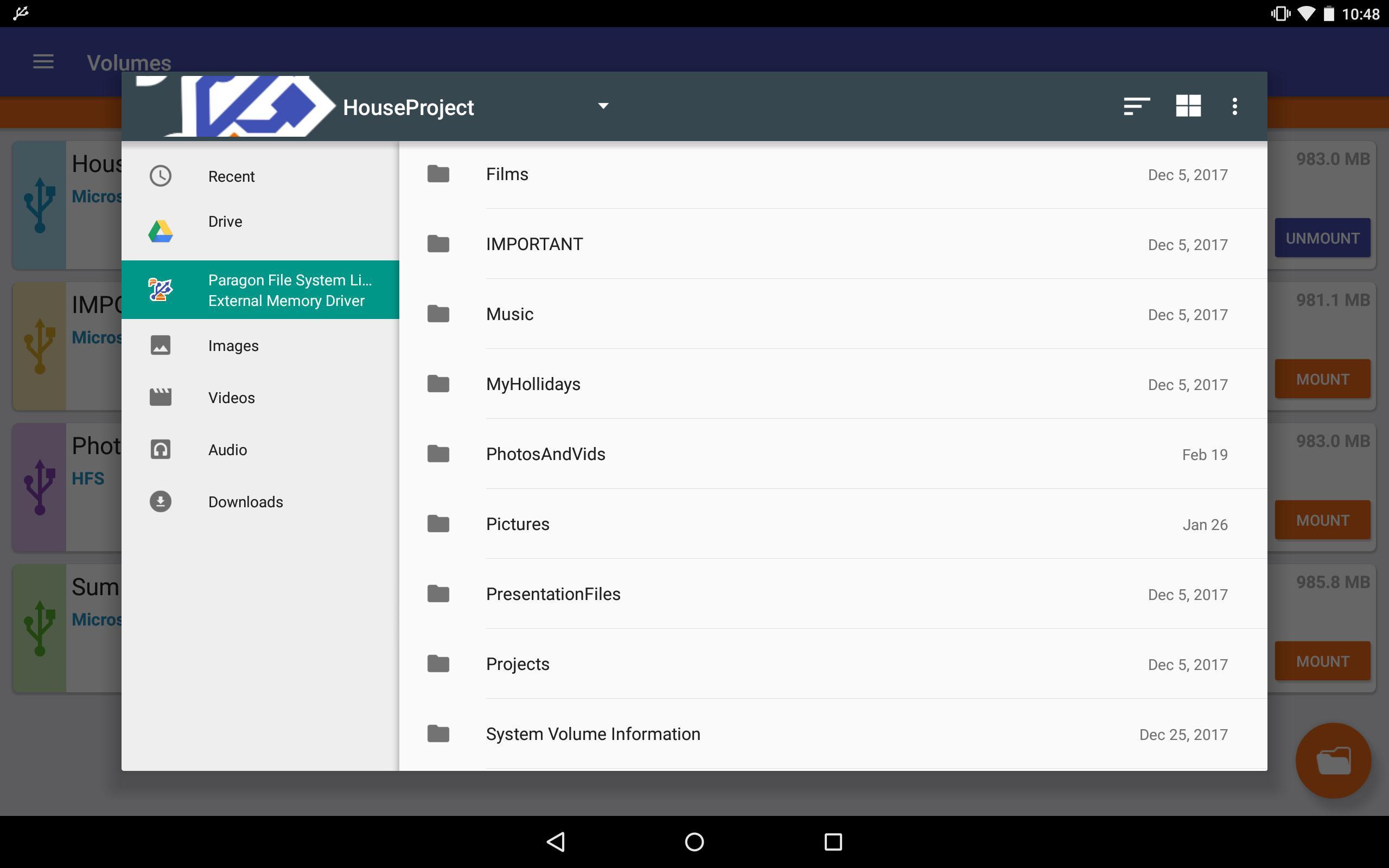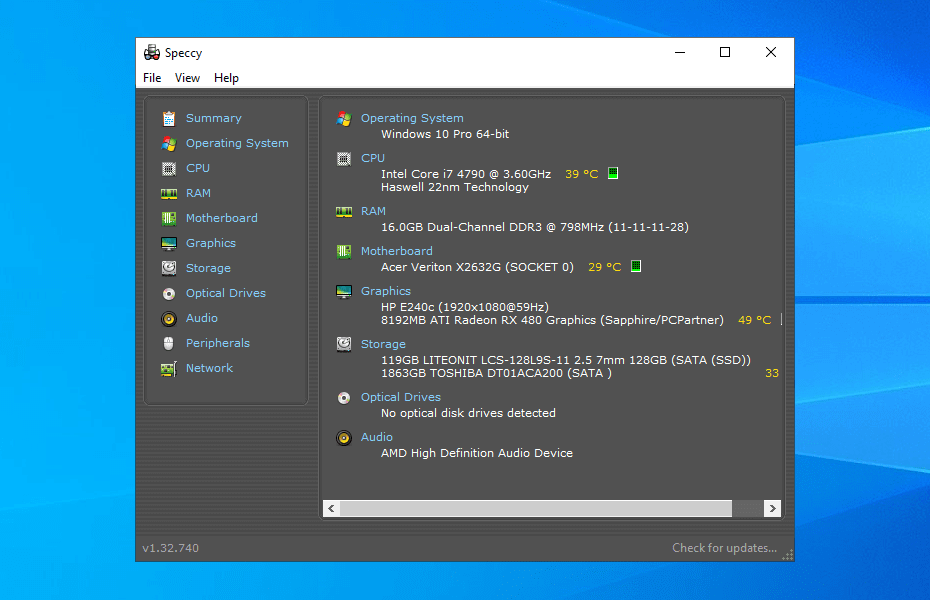- Exfat Hard Drive
- Download Exfat Driver For Mac Pro
- Download Exfat Driver For Mac Os X
- Can Mac Read Exfat
ExFAT drive no longer accessible from Windows 10. I was looking to use an external, exFAT formatted, drive to move files between a laptop running Windows 10 and a Mac running High Sierra. I was able to load the files from the laptop onto the 320 GB SimpleDrive. However, I was unable to access the drive from the Mac (it did not show up in Finder. .DISCLAIMER. This method may not work for you anymore. I have seen a few comments that seem to suggest that perhaps newer versions of macOS or the like h. Exfat Format free download - HP USB Disk Storage Format Tool, HDD Low Level Format Tool, USB Disk Storage Format Tool, and many more programs. Sep 15, 2020 ExFAT works freely with both Macs and Windows PC. Plug an ExFAT drive into your Mac and you Mac can see all the files on it. Read and write document to the drive. And you can do the same on a Windows PC. You can find out how to format an external hard drive to ExFAT in my document here.

“I have formatted my external hard drive with exFAT file system on my Mac machine running with OS X 10.7. Later I upgraded to OS X 10.8. Whenever I plugged the ExFAT drive to my Mac system, an error pops-up saying that “iMac doesn't recognize this drive”. I tried to fix this issue through permissions in Disk Utility, but no use. Few of my vital files are present on the ExFAT drive along with music, movies and photos. I am at loss; I have no clue, what else should I do to access my drive. I am looking for help. Please guide me.”
It’s damn difficult to bear the brunt of losing your irreplaceable data all of a sudden. But you should never lose hope at any point of time. According to the great saying, you can find solution for every problem in the world! Then why not for unrecognized ExFAT drive? Have a look here.
Why Mac cannot recognize the ExFAT drive?
There might be two causes here.
1) Mac might be missing some necessary driver software to read the ExFAT drive, after you upgraded from previous OS X
2) There might be some issue with your ExFAT drive
How to go with further troubleshooting?

1. Check Apple website for availability of any update/driver software for current version of your OS X. If you find any, install them on your machine and try to access the ExFAT drive. If you are unable to open the ExFAT drive even after installing adequate update and driver program, then jump to next method.
2. Plug-in the ExFAT drive into another working Mac Machine and see it is detected. If the drive is recognized, copy your entire data from it. Detach the drive and format it on your host Macintosh (on which your drive was not detected).
In case, your drive fails to show up on any other Mac machines then it seems like the problem lies within the ExFAT drive. It might be corrupted or became unreadable. Still don’t worry. You can bring back the corrupted ExFAT drive to normal state (working mode) by formatting/re-formatting it. Also you need to be concerned about data saved on the unrecognized ExFAT drive. As you can safeguard entire data present on your undetected ExFAT drive, with the help of Yodot Mac Data Recovery application.
Tool to recover undetected ExFAT drive on Mac system:
Yodot Mac Data Recovery can easily backup whole data from your undetected ExFAT drive, without causing any intact either to drive’s internal structure or to files stored on it. The program is well fitted to restore unrecognized Samsung hard drive, Toshiba external disk, Seagate portable drive, ScanDisk media card, HP Pen drive, Kingston USB etc i.e. it supports variety of storage devices as well as various brands; so you can undoubtedly trust the software to achieve guaranteed data restoration on any storage media. The retrieving ability of this utility is unbounded, thus you can recover any files like Office document, Portable Document Format (PDF), Outlook data files, archives, audio, video, images, RAW pictures etc of more than 300 types. Not just from corrupted storage, even inaccessible, dead, crashed, non-booting and un-mountable Mac machines data can also be retrieved by this software, with no difficulty. The smart interface of the program offers you a great data retrieval experience, effortless recovery process and preview of recovered data, so that you can review its recovering capability before you save regained data. The companionable toolkit is well-suited for all latest editions of OS X from Leopard to Sierra.
Steps to restore undetected ExFAT drive on Mac:
- Get Mac Data Recovery on your Macintosh system
- Attach undetected ExFAT drive
- Go for Volumes Recovery selection on main screen
- Select ExFAT drive and its all shown volumes from list
- Choose Normal Scan and click on Mark All key
- All files present on your ExFAT drive will be listed in two views
- Mark files that you need
- Save those files on Macintosh hard drive
Note:
- It’s suggested to keep an untouched backup of entire data prior to start OS upgrade
- Don’t forget to install necessary updates as well driver software after upgrading your OS
To troubleshoot an issue with Windows 10 (especially boot-related issues), it can be handy to boot into Windows 10 not installed on a Boot Camp partition. It is relatively straightforward to create a bootable USB Flash drive to boot to the Windows 10 installer and open up a DOS prompt for troubleshooting.
What is needed
- USB Flash drive (8 GB or larger recommended)
- Windows 10 Installer ISO for Windows 10
Preparation
All the preparation is done in macOS on the Mac that is having an issue booting Windows. It is important to use this Mac since it will be used to identify the correct Windows drivers.
USB Flash Drive
The USB Flash drive must be formatted as exFAT.
- Insert an 8GB or larger flash drive into a USB port on the Mac
- In Disk Utility, format the Flash drive as exFAT. Quit Disk Utility after this operation completes.
Boot Camp Driver
Open Boot Camp Assistant in the Utilities folder and download the current Windows Support Software from the “Action” dropdown in the menu bar. Save the Windows Support Software to your desktop or other location. Do not save directly to the USB Flash Drive.
Windows Install Media
Download the current install media from the Microsoft website. Windows will not be installed, but the install media will give access to the command line tools in Windows. Select the version of Windows that is closest to the version of Windows installed on the Mac (Windows 8, Windows 10). It does not matter what edition of Windows is used, since Windows is not going to be installed.
Create Recovery USB Flash Drive
To create the USB Flash drive, follow these steps:

- Mount the Windows ISO downloaded from Microsoft. To mount the ISO, double-click on the ISO in Finder.
- Drag all the files and folders from the mounted ISO to the USB flash drive.
- Drag the contents of the Windows Support Software to the USB flash drive.
- If there is not an AutoUnattend.xml at the top level of the drive (as shown below), download AutoUnattend.xml, unzip it, and add it to the drive. AutoUnattend.xml provides the location of the $WinPEDriver$ folder to load the drivers during boot.
- The 2018 MacBook Air (and potentially Macs after that) cannot load the IntelMEI driver and give a “Windows Setup could not install one or more boot-critical drivers. To install Windows, make sure that the drivers are valid, and restart the installation” message. On the USB flash drive, open the $WinPEDriver$ and remove the IntelMEI folder.
Once the flash drive has been created, it should look like this:
The $WinPEDriver$ folder is important because it contains the drivers for Windows to boot successfully from the USB flash drive and the hardware on that Mac.
Boot from the USB Flash drive
To inject the drivers, the Mac must be booted from the USB flash drive.
- Insert the USB flash drive into an available USB port on the Mac
- Reboot while holding the Option key.
- Select EFI volume in the startup selector.
If Windows does not boot from the USB flash drive after showing the Windows logo, you may have to run the following command to tell the firmware to boot the Windows installer from the USB flash drive. This has been observed on the late-2014 Mac Mini but may affect other models as well. To set the variable:
- Disable SIP by booting to the recovery partition.
- Boot back to macOS and open Terminal. Run the following command and enter the admin password when prompted:
sudo nvram InstallWindowsUEFI=1
Exfat Hard Drive
Insert the USB flash drive if it is not inserted, reboot, and select the EFI volume from the startup selector.
Note: the InstallWindowsUEFI variable is cleared at each reboot, so you will need to set it again if you do not select the USB Flash Drive.
Command Prompt and Mapped Drives
When Windows 10 starts up, it will prompt for installation of Windows 10. To open a DOS window, press fn-Shift-F10 (or just shift-F10) or click Repair Computer->Troubleshoot->Command Prompt (if available).
Download Exfat Driver For Mac Pro
Once in the command prompt, there are usually 3 drive letters available: X, C, and D.
- X: This is Windows that you are booted into in memory. The files from the boot.wim on the flash drive are copied to memory and then booted to
- C: Boot Camp partition
- D: The USB Flash drive
Running Utilities
Download Exfat Driver For Mac Os X
Within the Windows command prompt, you can run utilities on the Boot Camp partition.